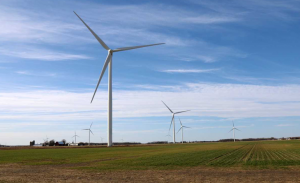The north-east US state of Massachusetts has chosen Mayflower Wind to develop an 804MW offshore wind farm, following bid submissions filed in August.
The project, located more than 20 miles south of Nantucket, is expected to start operations in 2025, according to the developer.
Having presented the state with several bid options for the project with progressive levels of investment, Massachusetts chose Mayflower’s low-cost energy proposal which achieves long-term prices below the original price cap of $84.23 (€75.47) per megawatt hour.
The wind farm will enable a $3.7bn electricity rate reduction over the term of the contract, according to Mayflower.
The wind farm, during its lifecycle will create up 10,000 jobs in Massachusetts, including both offshore jobs and onshore opportunities, said the developer.
Mayflower Wind president John Hartnett said: “Mayflower Wind is proud to have been selected to provide low cost renewable energy to Massachusetts.
“Development of the Mayflower Wind project will contribute to the building of an offshore supply chain on the south coast and across the Commonwealth, helping to launch a new clean, safe and innovative sector of our economy. We look forward to working with all of our stakeholders to ensure a safe and successful project.”
Mayflower Wind also has provided the same competitive pricing solution to Connecticut under its current procurement process for offshore wind, matching the objective of securing low cost renewable energy articulated in the State’s energy plan.
Business Network for Offshore Wind chief executive Liz Burdock said: “This is evidence that the US offshore wind industry is becoming a mainstream clean energy source for US coastal states, and the opportunity for the US-based supply chain is only going to grow.
“It also underscores that states’ energy procurement policies, like those of Massachusetts, are vital for the nation’s transition to a clean energy economy.”
According to Burdock the selection of Mayflower Wind, which is a joint venture between oil and gas giant Shell and Portuguese utility EDP Renewables, demonstrates the “rush to fuel supply diversification”.
She added, “This team will bring regulatory expertise and use a supply chain that will expand across America.”
Vineyard Wind, which is developing the 800MW Vineyard Wind 1 project off the coast of Massachusetts, also submitted a bid under the state’s latest offshore wind solicitation.
Chief executive Lars Pedersen said, “While today’s decision is disappointing, we remain fully committed to delivering the first large-scale offshore wind farm in the United States to Massachusetts, and will continue to grow our company in the Commonwealth.
“Congratulations to Mayflower Wind on their winning bid, we look forward to working with them and other developers to engage with stakeholders across the region.
“We commend the Baker-Polito Administration and the Massachusetts Legislature for their continued commitment to renewable energy and plans to pursue another 1600MW of offshore wind for Massachusetts in the coming years.”
Next, Mayflower Wind and the state will negotiate long-term power contracts by mid-December, and for long-term contracts to be submitted to the Massachusetts Department of Public Utilities for approval in January 2020.

 EDF Renewables has awarded Siemens Gamesa an order to supply 66 turbines for the 232MW Milligan wind project, in Nebraska, US. The project in Milligan County is expected to come online at the end of 2020. Siemens Gamesa will supply 30 of its 4.5-145 and 36 of the 2.7-129 model. The contract also includes a service and maintenance agreement. The order marks 1GW of the 4.5-145 model sold worldwide by Siemens Gamesa. Siemens Gamesa chief executive for onshore Americas Jose Antonio Miranda said: “EDF Renewables is a very strong partner for us and we are glad to be working with them on a number of projects like Milligan and the recently announced Coyote and Oso Grande wind projects.” The Milligan project marks the third order for EDF Renewables North America to […]
EDF Renewables has awarded Siemens Gamesa an order to supply 66 turbines for the 232MW Milligan wind project, in Nebraska, US. The project in Milligan County is expected to come online at the end of 2020. Siemens Gamesa will supply 30 of its 4.5-145 and 36 of the 2.7-129 model. The contract also includes a service and maintenance agreement. The order marks 1GW of the 4.5-145 model sold worldwide by Siemens Gamesa. Siemens Gamesa chief executive for onshore Americas Jose Antonio Miranda said: “EDF Renewables is a very strong partner for us and we are glad to be working with them on a number of projects like Milligan and the recently announced Coyote and Oso Grande wind projects.” The Milligan project marks the third order for EDF Renewables North America to […] 